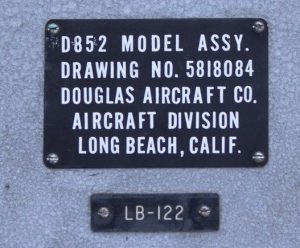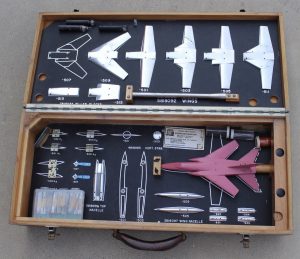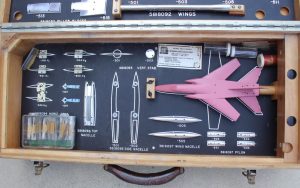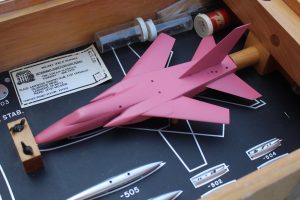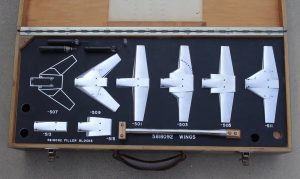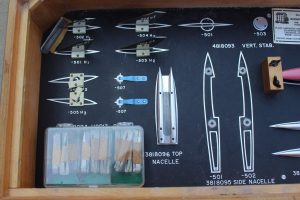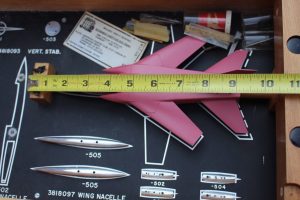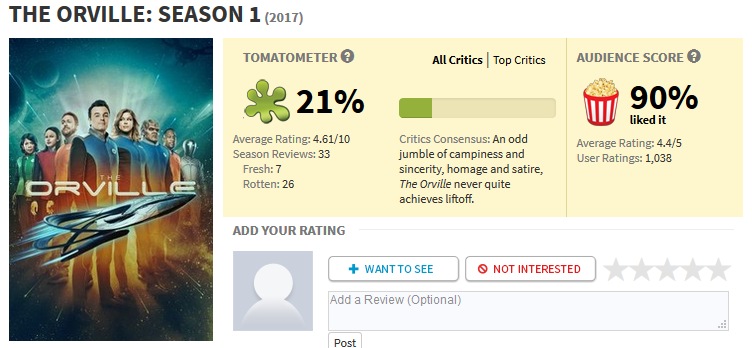Currently on eBay is a nice wind tunnel model set of parts for the Douglas D852. The design is not immediately known to me, but I suspect it’s an early 60’s concept, perhaps a very early TFX (eventually the F-111) or some other variable-sweep fighter. Anyone know?
For decades, the approach most people have taken to responding to SJWs and their politically correct ideological shock troops has been to cringe when they demand it, beg for forgiveness for the faintest slight, restrain your opinions lest the screeching harpies of the PC hivemind leap upon you. Such a situation could only last jsut so long before there’s a backlash; thus the return of “out and proud” white nationalists and the likes of Trump. but then, there will hopefully be a lot more of THIS sort of thing:
One single innocuous word, a statement of what a guy – *any* normal guy, if he’s honest – likes, causes the ideological gatekeeper of the show to completely lose the script. The really good part is that the actually honest feller here doesn’t back down, doesn’t apologize, but gets on with making his point.
Pitch Black Exoplanet: Hot Jupiter WASP-12b Reflects No Light
Short form: the “hot Jupiter” (so called because it’s a Jupiter-like gas giant really close to its star) turns out to have an albedo of 0.064, darker than new asphalt.
Here’s the thing, though: WASP-12b is so close to its start that its orbital period is 26.2 *hours,* and its surface temperature is 2600 degrees Celcius. At those temperatures, it would be incandescent, glowing sorta orangish:

So it might absorb virtually all the light that falls on it from its star, but it re-radiates that energy back out into space largely in the visible spectrum. It would not look “black” anymore than the filament in a lit lightblub looks black. Additionally, it’s so close to the parent star that it is physically distorted into an egg-shape. No doubt if you were close enough to see the planet clearly, the pointy-end, closest tot he star, would likely be *really* hot, glowing intensely; the night side would look like a slightly dim star.
The link provides an illustration for the article that seems of dubious value in illustrating the situation:
When you have *vast* stretches of unimproved Siberia to get across, you *need* something like this, the DT 30…
Because why not:
While looking at something else on eBay, a listing for something rather more interesting came up:
UPDATE:
Or, more specifically, I just realized why I loved one minor detail about “The Orville:” the viewscreen. It’s FRIGGEN’ HUGE. The viewscreen on the bridge of Star Trek vessels has always been disturbingly small, which has never made any sense.
It’s unclear whether the viewscreen here is a projection or a window. External shots show a bright white glow covering the region that would be the viewscreen, but there are also clearly visible windows that show the interior normally-lit.

It’s never too early to start getting all nit-picky tech-nerd about these things…
CBS Won’t Allow Any Reviews of Star Trek: Discovery Before It Airs
Yeah, that really screams “we have faith in this wonderful show.”
That said…
The post-war German “Hoffman” looks like it was wrong on every level. I gather that in various countries and at various times there have been laws that have provided advantages to three-wheeled vehicles… easier registration, lower legal hurdles to ownership and operation, etc. But three wheeled “cars” have all seemed to be just terrible, terrible designs.
It’s nice to see an aerospace company that doesn’t try to hide it’s failures. This video has just been put out by SpaceX showing a number of their early landing fails; many are really quite interesting (an spectacular). Since a wise person (or company) learns from its failures, shortcomings, screwups and disasters, keeping a records and actively remembering this sort of thing is important.
And note just how many complete vehicle failures there were is such a relatively short period of time… and try to imagine a NASA program surviving even a third of that, never mind flying again quite so soon.
